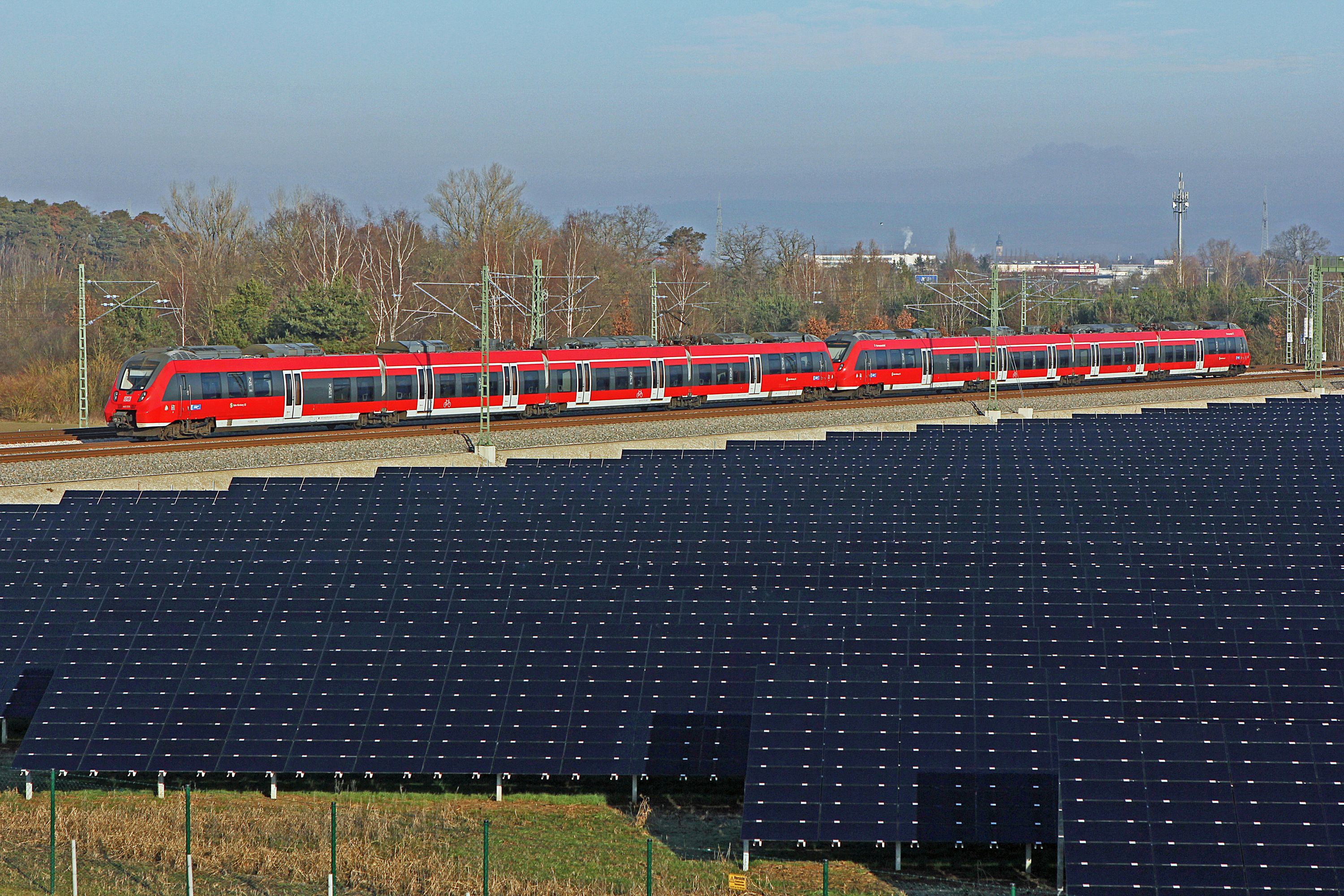Press Release #29
Energy transition in the railway power grid: direct feed-in of solar power through innovative inverters
Deutsche Bahn is the largest electricity consumer in Germany, operating its own power grid of nearly 8,000 kilometers in length. The project "PV4Rail" examined how this grid can be utilized for the feed-in of solar power. The consortium lead by Fraunhofer ISE developed and tested an inverter for the direct feed-in of photovoltaic power, analyzed the photovoltaic potential along the tracks, and conducted techno-economic studies of railway power PV systems. These could become an important component of the energy transition if regulatory and market disadvantages were addressed.
Currently, generating facilities with a capacity of about two gigawatts (GW) are installed on the Deutsche Bahn grid. These are primarily conventional power plants and hydroelectric plants. However, PV systems directly feeding into the railway power grid are not yet in widespread operation in Germany. "A relevant part of the energy demand in the railway power grid could be covered by photovoltaics, as the PV area potential along the railway lines is many times higher than the amount of energy needed in the railway power grid," explains Andreas Hensel, project manager of “PV4Rail” at Fraunhofer ISE. The project team identified suitable areas nationwide and examined their potential with detailed simulations. Even when only areas within a two-kilometer radius of a railway substation were considered, the possible installable rated capacity was 37.6 GWp, and the potential energy yield was 32,920 GWh annually. The electricity demand for train operations in total was around 7,500 GWh in 2023.
Inverters developed for direct feed-in
Since the railway network operates at a frequency of 16.7 Hz instead of the public grid's 50 Hz, the project partner Vensys Elektrotechnik GmbH developed a central inverter with a capacity of 2 MW, which is divided into two symmetrical power parts of 1 MW each. One of the power parts was tested in the multi-megawatt lab at Fraunhofer ISE, achieving an efficiency of 96.6 percent (including self-consumption for cooling, etc.). Fraunhofer ISE also developed regulations for the grid-forming operation of the inverters in the railway grid.
For the connection execution, the team considered various connection configurations depending on the size of the installation: while smaller systems up to 5 MW can feed directly into the overhead line, capacities up to 12 MW are fed into substations via the busbar. This variant shows the least differences in terms of LCOE costs compared to 50 Hz systems. For larger systems up to 40 MW, a dedicated substation with a transformer and switching station must generally be constructed for connection to the 110 kV railway grid.
So far, railway power PV systems in Germany are limited to pilot initiatives. In Austria, several systems with more than 10 MWp capacity have already been put into operation on the grid. However, the grid connection conditions at ÖBB differ from those of Deutsche Bahn. Due to the operational requirements of the railway power grid and the compatibility of inverters with control and safety technology, only grid-forming inverters can be used by DB. Grid-forming behavior has already been tested in a simulation environment by researchers at Fraunhofer ISE and could be implemented in a follow-up project.
The Fraunhofer ISE enables the development and characterization of inverters in the multi-megawatt range at its Center for Power Electronics and Sustainable Grids.
The project was funded by the Federal Ministry for Economic Affairs and Energy.

Downloads and Links
- Project Website "PV4Rail" (ise.fraunhofer.de)
Last modified: